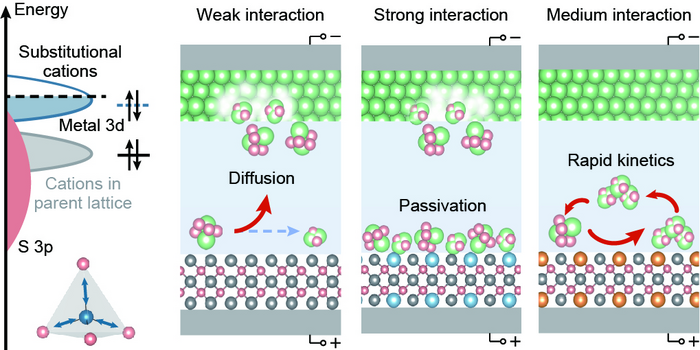Professor Huigang Zhang of the Chinese Academy of Sciences’ Institute of Process Engineering (IPE) and Dr. Jun Lu of the United States’ Argonne National Laboratory discovered a “volcano-shaped” relationship between polysulfide adsorption and catalytic activity in lithium-sulfur (Li–S) batteries.
 Schematic diagram of design principles for high-efficient lithium–sulfur catalysts. Image Credit: Zihan Shen.
Schematic diagram of design principles for high-efficient lithium–sulfur catalysts. Image Credit: Zihan Shen.
The study was published in Nature Catalysis on June 16th, 2022.
This volcano-shaped relationship, according to Professor Zhang, could change the long-held principle that “strong adsorption of polysulfides leads to good catalytic activity.”
Because of its high energy density, the Li–S system has a lot of possibilities for next-generation batteries. The slow kinetics of polysulfide conversion reactions, on the other hand, causes the “shuttling effect,” which restricts rate capability and cyclability, making practical applications difficult.
Numerous experimental studies have recently found that catalytic polysulfide conversion is important for improving kinetics and suppressing polysulfide shuttling. Despite substantial progress in Li–S battery electrochemical performance, catalyst research has largely relied on trial and error, with the governing principle remaining elusive.
The researchers showed that, while strong polysulfide adsorption lowers the activation barrier for polysulfide conversion, it also hinders product desorption in this investigation. Polysulfides (from Li2S8 to Li2S2/Li2S) are sequentially adsorbed onto the same sites during charge/discharge as a result of the scaling principle.
The researchers doped transition metal into the crystallographic framework of ZnS to control adsorption energy and maximize catalytic efficiency. The dopants were stressed, and their d-orbitals were adjusted accordingly. As a result, the adsorption energy was linearly related to the dopant’s d-band center, but catalytic activity was “volcano-shaped.”
This a discovery implies that a long-standing assumption of strengthening adsorption to improve catalysis is not valid when desorption is rate limiting.
Catalysts and absorbents in a Li–S battery should be designed separately to improve the performance of Li–S batteries.
Huigang Zhang, Professor, Institute of Process Engineering, Chinese Academy of Sciences
This research provides a rational foundation for deciphering the catalytic process of Li–S batteries at the atomic or molecular level, as well as designing new catalysts.
The study was supported by the National Key Research and Development Program of China, the National Natural Science Foundation of China, and the US Department of Energy (DOE).
Journal Reference:
Shen, Z., et al., (2022) Cation-doped ZnS catalysts for polysulfide conversion in lithium–sulfur batteries. Nature Catalysis. doi.org/10.1038/s41929-022-00804-4.